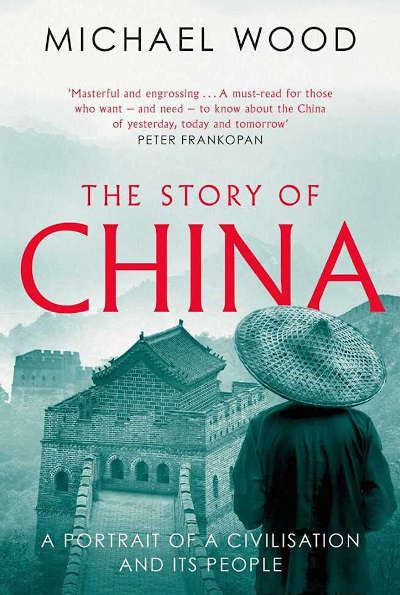In the picture
Cover of Michael Wood's book 'The Story of China' (London: Simon & Schuster, 2020) 624 pgs.
As China grows in international stature to become a superpower with aspirations to replace the United States as the dominant global power, so does the interest of the non-specialist public in delving into the reality of the great Asian country and learning more about where it has come from, in order to try to get a glimpse of its future direction.
As a result of this growing interest, a wide range of monographic publications on China, its history and present in general, or on some particular aspect related to it, began to proliferate. Titles such as the acclaimed 'On China' by Henry Kissinger, or 'Has China Won? The Chinese Challenge to American Primacy' by Kishore Mahbubani, are just some of the most recent contributions to the effort to unravel for readers from very diverse backgrounds the mysteries and keys to the fascinating Chinese civilization.
The Story of China' by British journalist Michael Wood is one of the books that, due to its depth, deserves to be included in the list of the great titles published on the Asian giant. The work is profusely documented; it describes the history of China in depth and without unnecessary boasts of erudition; therefore, the whole is, at the same time, entertaining and accessible to any reader.
This work, monumental for its length, was born between 2014 and 2017 as a sequel to an excellent documentary miniseries that the same author presented for the BBC; it preserves, in its prose, all the freshness of a language designed for audiovisual communication, very plastic in the numerous descriptions he makes of the places where many of the numerous protagonists who populate the pages of the book carry out their activity.
Precisely in the general tone that it knows how to transmit lies one of the successes of the work, which is not limited to an exact and cold account of the long and rich history of China over the centuries, but skillfully interweaves the indispensable historical data with numerous references to the daily life of some of the many characters, public and private, who have forged the China we know today. The final product is difficult to classify, halfway between history, travel literature and journalistic chronicle, but it is undoubtedly attractive and easy to follow.
With this method, throughout its nineteen chapters, 'The Story of China' covers the central themes of Chinese historiography: its birth as a hydraulic state -parallel to that of the Mesopotamian civilizations- emerged from the unpredictable waters of the Yellow River; the succession of dynasties with distinct geographic roots; the expansion of the country southward from the initial nucleus; the structuring of the territory through a network of magnificent public works; the structuring of the territory through a network of magnificent public works that linked the basins of the main rivers with canals, giving it a sense of territorial unity that has been maintained over time; the government of the country understood as a 'mandate from heaven'; the proverbial Chinese creativity that bequeathed to the world advances such as gunpowder and the compass; the expansion towards the West in search of a protective shield against invasions from the steppes of Central Asia; the difficult control of Tibet and Xinjiang; the Confucian moral order of obligations that has inspired Chinese political life for centuries; the creation of a powerful bureaucracy based on strict Education and a high sense of ethics and service to the state; the prostration of China from its position as the most advanced and sophisticated civilization to that of a mere colony of Japan during the 'century of humiliation'; and so many others that complete the warp of the interesting Chinese tapestry.
The story also serves to revise and put in a new light some of the Western myths about China. One of them is, for example, that of the country's supposed indifference, even aversion, to any cultural influence from abroad. This well-known Chinese protective attitude, perhaps adopted after its traumatic meeting in the 19th century with a colonialist and technically more advanced West, does not sit well with the openness that China showed in earlier times -such as the Han and Tang periods- towards outside ideas. Interesting is, in this sense, the description of the arrival at the court of Emperor Taizong of a Christian monk who, beyond experiencing the welcome that the emperor gave him, saw how he ordered the translation of the Holy Scriptures for their preservation in the imperial library and how, in an example of religious tolerance that does not find much parallel in other cultural spheres of the time, he authorized the construction of a Christian church. The story of the Buddhist monk Xuanzang, received in China on his return from a long pilgrimage to India in the 7th century AD, points in the same direction.
Apart from the interest that works like this may have in themselves, they also serve to disseminate the reality of China in our cultural sphere, contributing to improve, however little, the knowledge about a country as distant as it is important. It would be good if this knowledge were to lead to greater mutual trust and, in final, to a stable and peaceful future.

